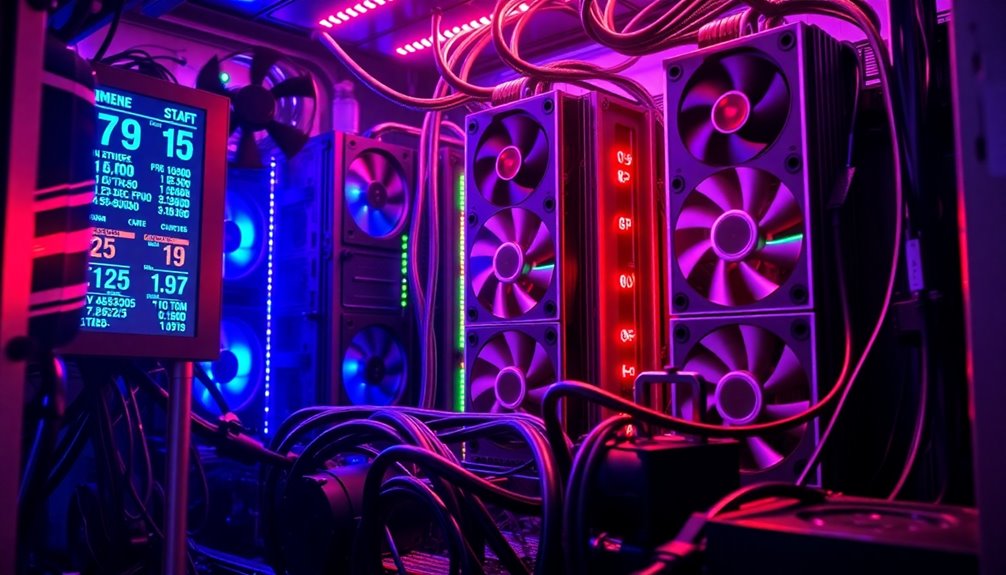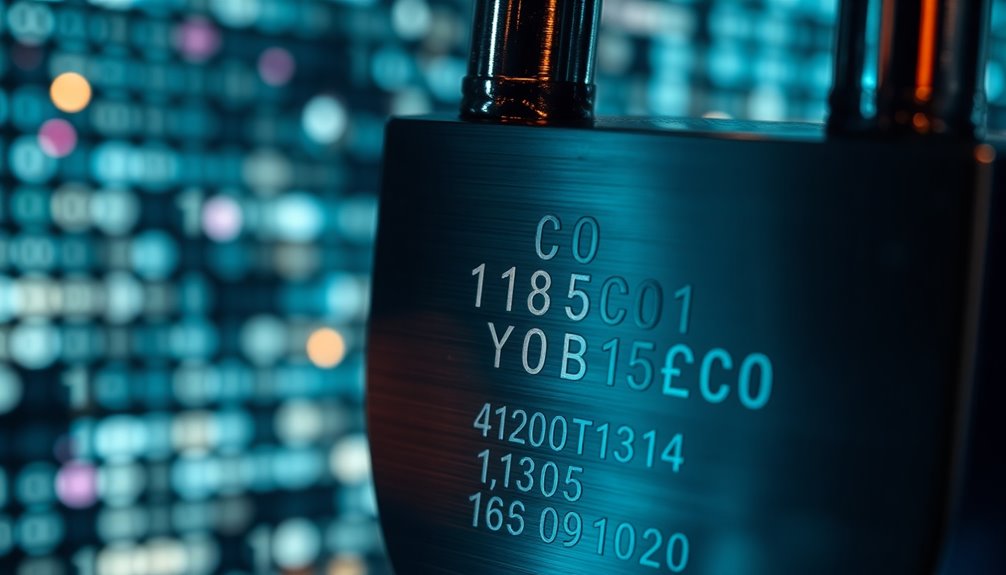Rig mining involves using specialized computer systems specifically designed for cryptocurrency mining. You'll utilize multiple GPUs to boost processing power and efficiency. These setups tackle complex mathematical problems to validate transactions, often using algorithms like Proof of Work. The performance is measured by hash rate, so higher rates lead to better rewards. Cost and environmental impact are key considerations, as mining can consume significant electricity. You'll need to balance performance and sustainability while staying informed about regulations that affect operations. If you're curious about optimizing your rig or exploring eco-friendly options, there's plenty more to uncover.
Key Takeaways
- Rig mining refers to using specialized computer systems, known as mining rigs, to extract cryptocurrencies from the blockchain network.
- These rigs typically consist of multiple GPUs, which enhance processing power and increase hash rates for better mining rewards.
- The mining process involves solving complex mathematical problems to validate transactions on the network, primarily using the Proof of Work (PoW) algorithm.
- Mining profitability is influenced by factors like electricity costs, hardware efficiency, and current cryptocurrency market prices.
- Regulatory uncertainties exist globally, affecting mining operations with varying national policies on cryptocurrency mining practices.
Mining Rig Overview
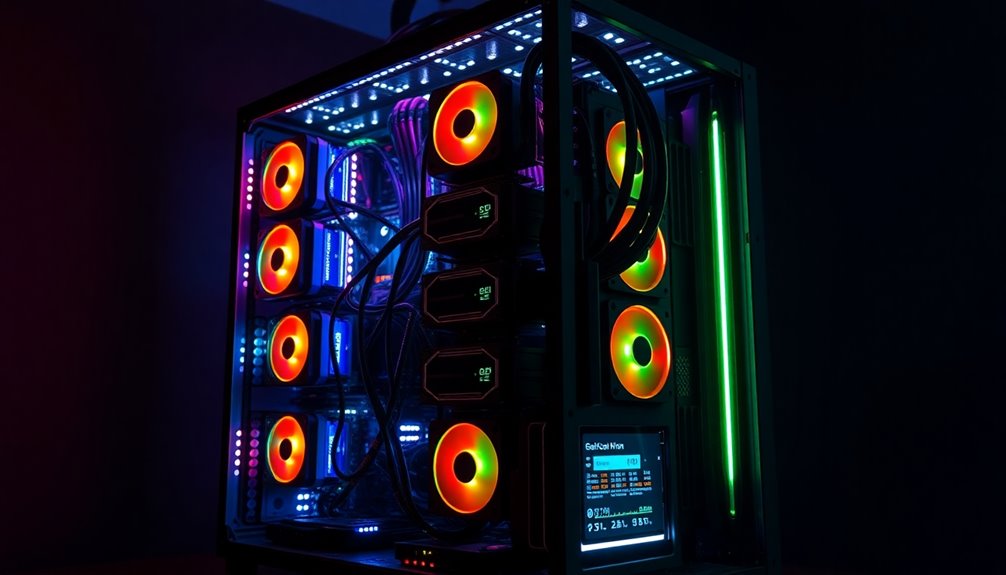
A mining rig is your gateway to the world of cryptocurrency mining. This specialized computer system uses multiple GPUs to maximize processing power and efficiency.
By solving complex mathematical problems, your mining rig validates transactions and secures the blockchain network through a proof-of-work consensus mechanism. The hash rate is an essential metric for your rig's performance; higher hash rates mean more potential rewards.
To build a successful mining rig, you'll need a compatible motherboard, a robust power supply unit, and an effective cooling system to keep everything running smoothly.
Mining Rig Basics Explained
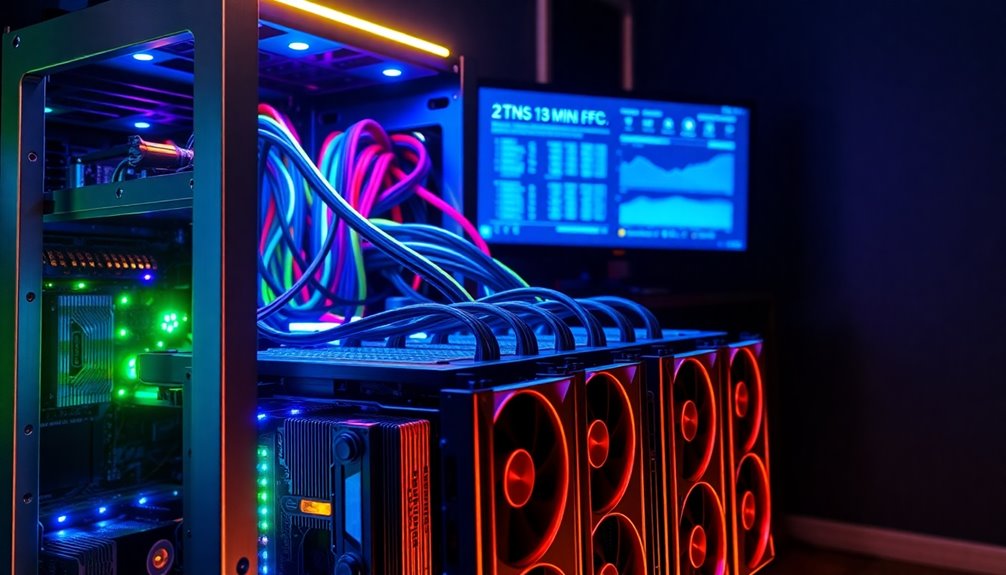
When you’re diving into cryptocurrency mining, understanding the basics of a mining rig is crucial. A mining rig is a specialized computer system designed to mine cryptocurrencies by solving complex cryptographic equations. Various components make up a mining rig, including powerful GPUs, a motherboard, and sufficient cooling systems to ensure optimal performance. As the cryptocurrency landscape evolves, so too do the techniques employed by miners, sometimes crossing paths with unethical practices; for instance, it’s essential to be aware of black hat hacker definitions to protect your digital assets. These definitions delineate harmful actions that exploit vulnerabilities, reminding miners to stay vigilant against potential security threats.
Most rigs utilize multiple GPUs, forming what's known as a GPU mining rig, to enhance processing power. The hash rate is a critical measure of your rig's performance; higher hash rates mean your rig can solve equations faster, leading to more effective mining.
Crucial components include a compatible motherboard, multiple GPUs, a CPU for basic tasks, sufficient RAM, and a robust power supply unit.
Don't forget about cooling systems, as they're essential to manage the heat generated during operation, ensuring performance and hardware longevity.
Mining Process and Algorithms
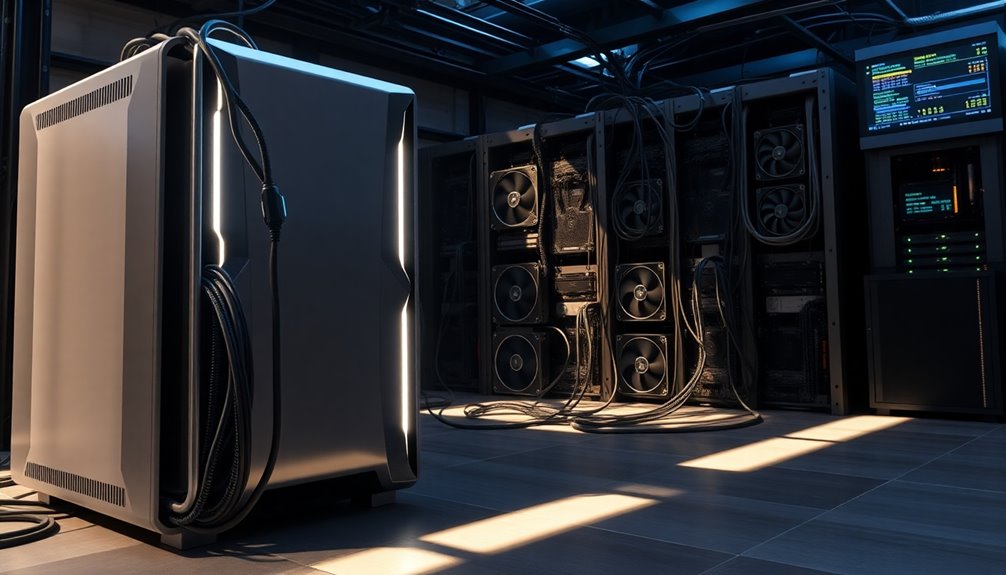
Understanding the mining process and algorithms is essential for anyone looking to dig deeper into cryptocurrency mining. At its core, mining involves solving complex mathematical problems to validate transactions and secure the blockchain.
The most common algorithm you'll encounter is Proof of Work (PoW), where miners compete to solve cryptographic puzzles. This competition means that miners with higher hash rates, measured in hashes per second (H/s), have better chances of successfully mining new blocks.
Different cryptocurrencies use various algorithms to enhance security and efficiency; for instance, Ethereum originally utilized Ethash, while Zcash employs Equihash.
Additionally, mining difficulty adjusts approximately every two weeks for Bitcoin, ensuring a steady flow of new blocks regardless of network hash rate fluctuations.
Profitability Versus Environmental Impact

While the allure of cryptocurrency mining can be enticing due to its profit potential, the stark reality of its environmental impact often complicates the decision-making process.
You'll find that profitability hinges largely on electricity costs, which can range from $0.10 to $0.25 per kWh. With mining operations consuming massive amounts of energy—up to 1500 watts for a single ASIC miner—your electricity bills can quickly eat into your profits.
The environmental impact is substantial, with Bitcoin mining alone estimated to consume over 100 terawatt-hours annually. As market sentiment shifts towards sustainability, you might feel compelled to adopt greener practices, turning to renewable energy sources to mitigate both operational costs and carbon footprints, ultimately balancing profitability against sustainability concerns.
Cost Versus Performance Analysis

Evaluating cost versus performance in mining rigs is vital for maximizing your investment.
When conducting a cost performance analysis, you'll find that ASIC miners deliver impressive hash rates of 90 to 100 TH/s, but their price tags range from $2,000 to $15,000.
In contrast, GPU rigs are more affordable at $500 to $3,000, yet they only average around 30 MH/s.
Energy efficiency is important too; ASICs consume about 1000 watts, while GPUs use 150 to 300 watts each.
To assess mining profitability, use a calculator that includes electricity costs and current market prices.
As mining difficulty rises and market volatility fluctuates, regularly reassess your hardware to guarantee peak performance and returns on your investment.
Regulatory Uncertainties in Mining

Regulatory uncertainties in mining can create significant challenges for operators, as national policies on cryptocurrency vary widely. Some countries ban mining operations outright, while others impose taxes or licensing requirements, complicating your compliance efforts.
In the U.S., the absence of a uniform federal framework means you'll face different state-level regulations, impacting your operational costs. Additionally, environmental concerns about the carbon footprint of mining activities are prompting governments to evaluate stricter regulations, especially in areas reliant on fossil fuels.
Recent discussions in the European Union suggest potential legislation that could enforce energy efficiency standards on mining operations. Staying informed about these evolving regulations is essential, as non-compliance could lead to fines or operational shutdowns, jeopardizing your mining endeavors.
Emergence of Eco-Friendly Mining

The rise of eco-friendly mining is reshaping the cryptocurrency landscape, as operators seek sustainable practices to mitigate their environmental impact.
By harnessing renewable energy sources like solar, wind, and hydroelectric power, you can notably lower energy costs while reducing the carbon footprint of mining operations.
Many companies are turning to advanced ASICs and FPGAs, which boost energy efficiency and decrease electricity consumption per terahash.
Additionally, investing in carbon offset programs—such as planting trees or supporting renewable energy initiatives—helps promote a more sustainable industry.
As of 2023, over 50% of Bitcoin mining is powered by renewable energy, showcasing the industry's commitment to eco-friendly mining practices.
This shift not only benefits the environment but also enhances the long-term viability of cryptocurrency.
Optimize Cooling for Efficiency

When you optimize cooling for your mining rig, you're not just enhancing performance; you're also extending the life of your hardware. Proper cooling systems like high-quality fans or liquid cooling solutions are essential to maintain ideal temperatures and prevent overheating.
Setting up a well-ventilated environment with a push-pull airflow system can greatly improve airflow. Don't forget to apply thermal paste on your GPUs and other components to enhance heat transfer efficiency.
Utilizing monitoring software lets you track temperatures in real-time, enabling you to adjust fan speeds or cooling solutions as needed.
Additionally, consider ambient cooling strategies, such as placing your rig in a temperature-controlled space or using air conditioning, to boost overall mining efficiency and equipment longevity.
Frequently Asked Questions
What Does a Mining Rig Do?
A mining rig's primary function is to validate transactions on a blockchain by solving complex cryptographic equations.
You'll notice that it uses multiple GPUs to boost computational power, allowing it to compete effectively in solving these mathematical puzzles.
By successfully adding blocks to the blockchain, you're helping create new cryptocurrency units.
If you're part of a mining pool, you can collaborate with others to increase your chances of earning rewards and sharing profits.
How Much Do Mining Rigs Make?
Mining rigs can make anywhere from $1 to $30 a day, depending on the type of rig and the cryptocurrency you're mining.
GPU rigs typically earn $1 to $3 daily, while ASIC miners can generate $15 to $30, especially when mining Bitcoin.
Your profits will fluctuate with market prices and mining difficulty, so it's essential to factor in electricity costs and maintenance, which can take up to 50% of your earnings.
How Long Does It Take to Mine 1 Bitcoin With One Rig?
Imagine waiting three to five years for a single Bitcoin! If you're mining with one rig, that's about how long it might take, depending on factors like your rig's hash rate and the network's difficulty.
With an average high-performing ASIC miner at 100 TH/s, you could expect to earn around 0.0006 to 0.001 Bitcoin daily.
Keep an eye on electricity costs and market conditions, as they can also impact your mining journey.
Are Mining Rigs Still Profitable?
Are mining rigs still profitable?
It really depends on various factors, like electricity costs and current cryptocurrency prices. If you're using energy-efficient rigs and mining in a favorable market, you can still see decent returns.
Joining a mining pool can also boost your chances of consistent rewards. However, keep an eye on hardware upgrades and market fluctuations, because outdated rigs mightn't keep up with competition, impacting your overall profitability.
Conclusion
In the ever-evolving world of cryptocurrency, mining rigs are essential to the process. Did you know that Bitcoin mining alone consumes about 0.5% of the world's electricity? As you weigh the costs versus performance, it's important to take into account not just profitability but also the environmental impact. With emerging eco-friendly practices, you can optimize your setup for efficiency while staying mindful of regulations. Embracing sustainable mining can lead to a more responsible and profitable future in this industry.
